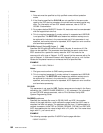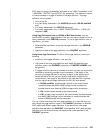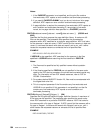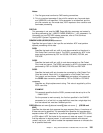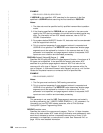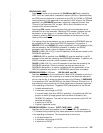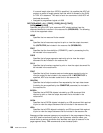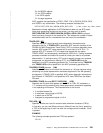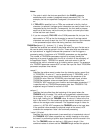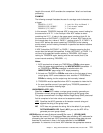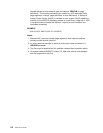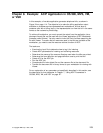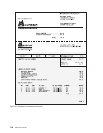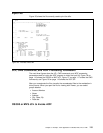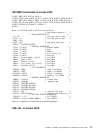Notes:
1. The order in which the fonts are specified in the CHARS parameter
establishes which number is assigned to each associated TRC. For
example, the first font specified is assigned 0, the second font 1, and so
on.
2. If TRC=YES is specified, but no TRCs are contained in the file, the first
character (or second if carriage control characters are used) of each line is
interpreted as the font identifier. Consequently, the font used to process
each line of the file may not be the one you expect, and one byte of data
will be lost from each record.
3. If you do not specify TRC=YES in the SYSIN parameter file, but your line
data contains a TRC as the first character (or second if carriage control
characters are used) of each line, the TRC is processed as a text character
in the processed output rather than being used as a font identifier.
TRIGGERn={
record
| *}, {
column
| *}, {'
value
' |X'
value
'}
Specifies the locations and values of data fields within the input file that are to
be used to define indexing groups in the file. These data fields are referred to
as “eye catchers” or triggers, because their presence in the file triggers a
processing action. A maximum of 4 TRIGGER parameters can be specified.
The number of TRIGGERn parameters required to uniquely identify the
beginning of a group of pages within the file is a function of the complexity of
the application output. TRIGGER1 is special, and each record in the file
containing this value is referred to as an indexing anchor record. The presence
of a TRIGGER parameter causes ACIF to index the input file. Each TRIGGERn
parameter comprises three values:
record
| *
Specifies the relative record number from the indexing anchor record (that
is, TRIGGER1). A value of “*” can be specified only in TRIGGER1, and it
indicates that every record should be checked for the presence of the
TRIGGER1 value. After the TRIGGER1 value has been found, all other
TRIGGERn parameter values are specified as a relative offset from
TRIGGER1. ACIF reports an error condition and terminates processing if “*”
is specified with any TRIGGERn parameter other than TRIGGER1. The
supported range of values for
record
is 0–255.
column
| *
Specifies the byte offset from the beginning of the record where the
TRIGGER value is located. This value can be specified in absolute terms
(for example, 10) or as “*,” which results in ACIF scanning the record from
left to right, looking for the TRIGGER value. A value of 1 refers to the first
byte in the record. For files containing carriage control characters, column 1
refers to the carriage control character. The supported range of values for
column
is 1–32 756. ACIF compares the TRIGGER value to the input data.
If the specified value exceeds the physical length of the record, ACIF
considers the comparison “false” and continues processing.
'
value
' | X'
value
'
Specifies the actual alphanumeric (case-sensitive) or hexadecimal value of
the TRIGGER. ACIF does not perform any validity checking on this value,
but uses it in performing a byte-for-byte comparison with the records in the
file. The TRIGGER value can be from 1–250 bytes in length. If the
combined values of
column
and the TRIGGER length exceed the physical
110 ACIF User’s Guide



